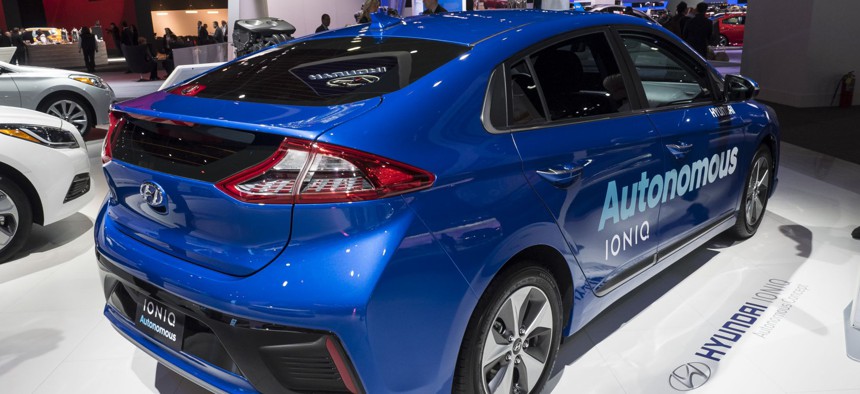Racing to Be First: How Autonomous Vehicles Will Affect Our Communities

Shutterstock

Connecting state and local government leaders
A new National League of Cities report addresses the most pressing questions that local officials might have concerning self-driving vehicles.
The race towards fully autonomous vehicles has shifted into overdrive. In the past year, major partnerships and acquisitions between tech firms and traditional automakers have signaled the race is heating up for the future of transportation—and the stakes are high.
Traditional automakers like GM, Ford, Daimler and Fiat are taking the competition posed by Google’s Waymo and Musk’s Tesla seriously—partnering with car-sharing platforms like Uber and Lyft as well as acquiring their own autonomous capabilities in firms like Cruise Automation. Nearly every major auto manufacturer has set a target for full autonomous production by 2021 or before, while autonomous vehicles are already on the streets of Singapore, Tempe, and Pittsburgh. If major investments by the sector’s most prominent firms are anything to go by, producers are betting that the future of mobility, especially urban mobility, will be in autonomous fleets of shared vehicles collecting reams of data as they drive through our city streets.
It’s no secret that mobility is changing, and these companies are competing to stay ahead of the curve. The speed with which these companies are racing to enter the market raises concerns, however, and has created friction between regulators, municipalities, and the manufacturers themselves. Quickly following the first fatality resulting from autonomous driving technology in May 2016, the National Highway Traffic Safety Administration released their first Federal Automated Vehicles Policy Guide, addressing the challenges and opportunities the technology brings with it. The policy guide is careful to navigate the tension between implementing regulation that ensures public safety while also promoting innovation, and is meant to be a living document, updated regularly as the field evolves.
The National League of Cities approaches this issue from a similar position, understanding that the number and complexity of issues that city officials and regulators are facing will continue to change. Autonomous vehicles are already on our city streets, and for the foreseeable future, a variety of vehicles will operate on our roads with varying levels of automation. There are many benefits that autonomous technology can bring, including reduced congestion and traffic deaths, increased mobility for the disabled and seniors, and greater equity in access to transportation. The challenges are real, however, as illustrated in recent conflicts between cities, state regulators, and AV testing operators.
NLC’s latest resource for cities, “Autonomous Vehicles: A Policy Preparation Guide,” addresses the most pressing questions that local officials might have concerning autonomous vehicles in their communities. One of the most important takeaways is the importance of planning ahead, and reaching out to state Departments of Transportation, regional planning authorities, concerned residents, and manufacturers.
There are many cities already doing just that—incorporating autonomous technology into their strategic development plans and hosting beta testing of the technology to further a dialogue and beginning to realize its implications for their community. Cities are also working with their states to think through regulation and enforcement, and are making their community’s concerns heard at the federal level. This technology is coming to your city’s streets—it might already be there— but the cities that think strategically and begin planning today stand to benefit the most.
Elias Stahl is the Urban Innovation Intern in the National League of Cities Center for City Solutions and Applied Research. Nicole DuPuis is a Senior Associate in the City Solutions and Applied Research Center.

NEXT STORY: U.S. Cities Make Biodiversity Their Top Resilience Priority




